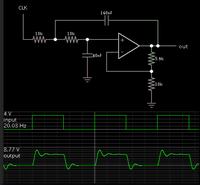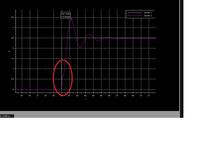mamech
Full Member level 3
Deviation from expected behaviour of sallen key op amp
hello
I am trying to make a demonstration for electrical dept. students and to show them a response of a real second order system, and for some reasons I chose sallen key. I built it on bread board. R1= 10k, R2 = 100k, C1=100uf, C2=1uf.
when I give square wave (from arduino) input I get a response that look similar to second order, but with some strange behaviour in the rising curve in the beginning (look at attachment).
I made some simulation in the following site (**broken link removed**), but it gives me a normal curve of second order system, without the deviation that appears in the hardware implemented system.
can anyone tell me why this strange behaviour occurs?
thanks
hello
I am trying to make a demonstration for electrical dept. students and to show them a response of a real second order system, and for some reasons I chose sallen key. I built it on bread board. R1= 10k, R2 = 100k, C1=100uf, C2=1uf.
when I give square wave (from arduino) input I get a response that look similar to second order, but with some strange behaviour in the rising curve in the beginning (look at attachment).
I made some simulation in the following site (**broken link removed**), but it gives me a normal curve of second order system, without the deviation that appears in the hardware implemented system.
can anyone tell me why this strange behaviour occurs?
thanks


